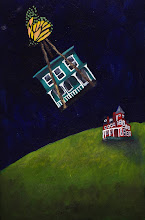
 There are some people who understand the symbolic nature of a new month and a new season. My lovely friend Charu helped me shake February's bad energy and series of life's malfunctions by greeting me this morning with a gift to ring in a new month: a candle, incense, an assortment of teas, and a Frieda Kahlo postcard.
There are some people who understand the symbolic nature of a new month and a new season. My lovely friend Charu helped me shake February's bad energy and series of life's malfunctions by greeting me this morning with a gift to ring in a new month: a candle, incense, an assortment of teas, and a Frieda Kahlo postcard. The sunny day reminded me of warmer days in the garden, of watching the earth come alive again, of dreams and dreamers, which leads me to share this passage from F. Scott Fitzgerald's The Great Gatsby:
As the moon rose higher the inessential houses began to melt away until gradually I became aware of the old island here that flowered once for Dutch sailors’ eyes—a fresh, green breast of the new world. Its vanished trees, the trees that had made way for Gatsby’s house, had once pandered in whispers to the last and greatest of all human dreans; for a transitory enchanted moment man must have held his breath in the presence of this continent, compelled into an aesthetic contemplation he neither understood nor desired, face to face for the last time in history with something commensurate to his capacity for wonder.









